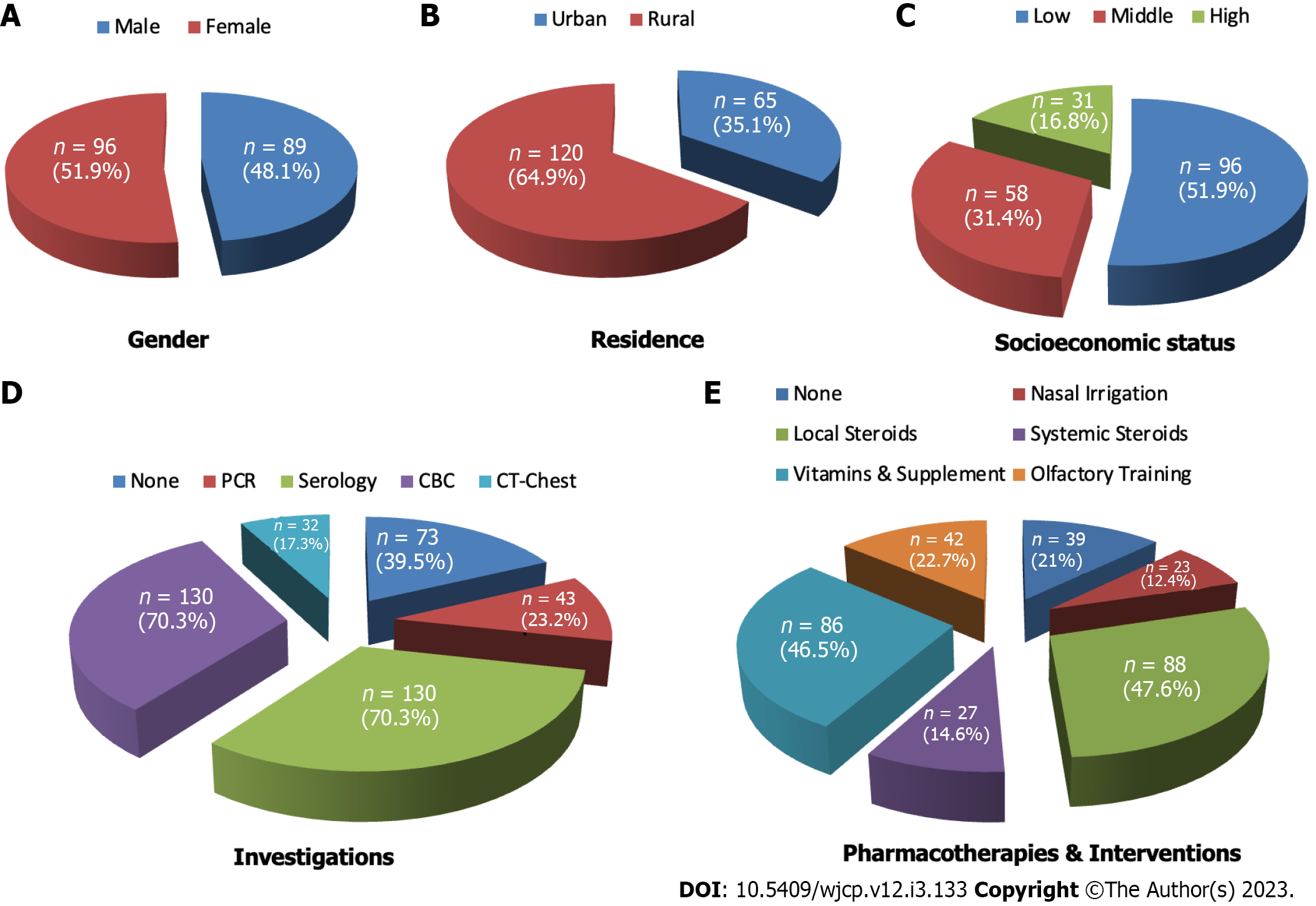Copyright
©The Author(s) 2023.
World J Clin Pediatr. Jun 9, 2023; 12(3): 133-150
Published online Jun 9, 2023. doi: 10.5409/wjcp.v12.i3.133
Published online Jun 9, 2023. doi: 10.5409/wjcp.v12.i3.133
Figure 1 Demographics, laboratory and treatment characteristics of the studied patients.
A: This study included 96 (51.9%) females and 89 (48.1%) males; B: The majority were rural residents (64.9%, n = 120), while 35.1% (n = 65) were urban residents; C: The majority were of low socioeconomic status (51.9%, n = 96), while 31.4% (n = 58) and 16.8% (n = 31) were of middle and high socioeconomic states, respectively; D: Investigations done by patients included serology and complete blood count (70.3%, n = 130, polymerase chain reaction (23.2%) and computed tomography-chest (17.3%, n = 32). While 39.5% (n = 73) did not do any investigations. E: The received pharmacotherapies and interventions to treat chemosensory disorders included local steroids (47.6%, n = 88), vitamins and supplements (46.5%, n = 86), olfactory training (22.7%, n = 42) and systemic steroids (12.4%, n = 23), while 22.7% of the patients (n = 42) did not receive any therapy. PCR: Polymerase chain reaction; CBC: Complete blood count; CT: Computed tomography.
- Citation: Hamed SA, Kamal-Eldeen EB, Ahmed MAAR. Evaluation of children and adults with post-COVID-19 persistent smell, taste and trigeminal chemosensory disorders: A hospital based study. World J Clin Pediatr 2023; 12(3): 133-150
- URL: https://www.wjgnet.com/2219-2808/full/v12/i3/133.htm
- DOI: https://dx.doi.org/10.5409/wjcp.v12.i3.133









